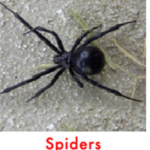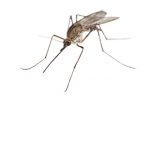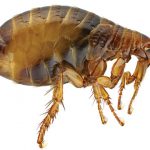Residential Pest Control – Indoors and Outdoors
If you’ve ever played outside, chances are that you’ve been bugged by insects. Maybe unwelcome ants joined you at a picnic in the park or a bee buzzed around your head while you were playing catch. None of this may have bothered you – unless you were bitten or stung. Ouch! It’s enough to make you stay indoors. But the outdoors can still be a great place to play if you know a little bit more about insects.
Why Do Insects Bite or Sting?
Insects such as bees, wasps, spiders, scorpions, and hornets usually attack when they feel like they are in danger. Sometimes they are protecting their territory, web, or nest. Other insects such as mosquitoes and ticks suck blood in order to survive. The female mosquito needs blood so that she can lay her eggs. (The male mosquito does not bite at all!)
What Are Insect Bites and Stings?
An insect injects venom into your skin when it bites or stings you. Usually, venom is like soap in your eyes – it doesn’t really hurt you, but it’s not very comfortable. It will make a small, itchy bump no bigger than a pea form on your skin. When you scratch, your skin becomes red and itchier. A tick bite can cause a red rash that looks a little like a bull’s eye (this may take as long as a week). In the case of bee stings, the area becomes swollen and a stinger is left in the skin.
Does It Hurt?
In most cases, insect bites are not serious and only hurt for a little while. The itching is the most irritating part of most insect bites and stings. Some bites or stings, such as a bite from a scorpion or a black widow spider, may require a trip to the emergency department. But this doesn’t happen very often. An adult will know whether this trip is necessary.
What Should You Do?
If anything bites or stings you, make sure you let an adult know. He or she will look at the bite or sting to see what needs to be done.
If mosquito bites you, try not to scratch. It’s hard sometimes, but scratching will make the itch worse and can cause the bite to swell, bleed, or get infected.
If you are stung by a wasp, yellow jacket, or hornet, an adult will remove the stinger by scraping it with a fingernail. The edge of a credit card also works well. Don’t pick out the stinger yourself with your fingers or tweezers. You could cause more venom to be released by squeezing it, which will make it hurt more.
If a honeybee stings you, you should also leave the stinger alone because this kind of stinger has a curve on the end that hooks into your skin. An adult will help you keep the area clean and the stinger will go away in a couple of days. For any type of bee sting, have an adult apply ice to the sting on and off for the first 24 hours. An antihistamine which is a type of medicine, can help stop the itching, pain, and swelling. Acetaminophen like Tylenol can also help stop the sting from hurting. Hydrocortisone creams and calamine lotions are also helpful to take away the itch. An adult will decide what medicine is best for you.
If you find a tick on you, don’t try to remove it yourself. Get an adult to help you. He or she will grab the tick with tweezers as close to your skin as possible and pull it off in one smooth motion. Once the tick is removed, put it in a jar of alcohol to kill it. Don’t try to crush it in your hands. Your doctor may want to see this tick later.
If you think a scorpion or a black widow spider has bitten you, tell an adult right away and have him or her take you to the emergency department at the hospital.
Learn more about bugs around your home
What a Bedbug Is
A bedbug is a small (about the size of a pencil eraser), a flat, reddish-brown bug that can be found in homes all over the world. It hides during the day and comes out during the night to look for blood. A bedbug has a special ingredient in its saliva (spit) that keeps blood from clotting while it’s eating.
What a Bee Is
Bee, or honeybee, is the word many people use to describe any flying insect that has wings and a stinger. But honeybees are really only one of a group of insects that includes wasps, hornets, fire ants, and yellow jackets. Honeybees are light golden brown, and their bodies are covered with fuzz. They build nests in old trees and manmade hives (like the ones that beekeepers take care of) and spend a lot of their time collecting nectar and pollen from flowers.
Wasps are reddish-brown and have skinny bodies, and they often make nests under the porches of buildings.
Bald-faced hornets are black with white markings, and they build nests shaped like footballs in trees and shrubs. Fire ants are tiny and reddish-brown and live in nests under the ground. Yellowjackets have yellow and black stripes on their bodies and are smaller than wasps, hornets, and honeybees. They make their nests in the ground or in old tree stumps.
What a Black Widow Spider Is
The black widow spider is one of six poisonous kinds of spiders in the United States. It is part of the arachnid family, which includes not just spiders, but ticks, mites, and scorpions, too. Its body is about one-half inch long (smaller than a dime), and it has long legs. The black widow spider is shiny and black with a red-orange or yellow mark in the shape of an hourglass on its stomach.
Black widow spiders and their relatives can be found almost anywhere in the Western hemisphere of the world in damp and dark places. Their favorite places are woodpiles, tree stumps, trash piles, storage sheds, fruit and vegetable gardens, stone walls, and under rocks. If they come inside, they will go to dark places like corners of closets, garages, or behind furniture. They are shy by nature and bite only when trapped, sat on, or accidentally touched.
What a Mosquito Is
A mosquito is an insect that is found all over the world. There are thousands of different kinds of mosquitoes in many different sizes and colors. The female mosquito needs blood from mammals ( ) to lay eggs and produce more mosquitoes. She has a special part of her mouth that she uses to suck blood, and her saliva (spit) thins the blood so she can drink it. In fact, it’s the mosquito’s saliva that makes the bites itch!
What a Flea Is
A flea is a small (no bigger than the head of a pin) brown bug with a hard shell. Fleas have tiny claws at the ends of their legs to help them attach to people or other warm-blooded animals and drink their blood. If you have a dog or cat, chances are pretty good that you’ve seen a flea. Fleas are often found on the coats of these animals. Once the animal comes inside, the fleas can then jump onto people or carpeting.
What a Gnat Is
A gnat is sometimes also called a black fly, even though it can be black or gray. It is a very tiny insect, no bigger than the head of a pin. Gnats are found anyplace in the world where there is a river or stream because they lay their eggs in watery places. They need the blood of warm-blooded animals to survive. They can bite humans right through their clothes to get blood.
What a Tick Is
A tick is a tiny brown mite, which is an arachnid. (Spiders and scorpions are the other members of the arachnid family.) A tick attaches itself to the skin of an animal or reptile and sucks blood. There are hundreds of kinds of ticks on the planet, and they can be found almost everywhere. The two types of ticks that many people talk about are the deer tick and the dog tick.
The deer tick is about the same size as the head of a pin, and it is found in many parts of the United States. Deer ticks can carry Lyme disease, especially those in New England and parts of the Midwest. (Lyme disease gets its name from the place where it was discovered – Lyme, Connecticut, which is in New England.) The dog tick is very common and can be up to one-half inch long. If you have a dog, chances are pretty good that you’ve seen a dog tick on its coat. This type of tick can carry a disease called Rocky Mountain spotted fever.
What a Scorpion Is
A scorpion is part of the arachnid family, which also includes mites, ticks, and spiders. Scorpions are about three inches long (about the length of a crayon), with eight legs and a small pair of claws that look like crabs’ claws. A scorpion’s stinger is at the end of its long tail.
There are 650 species of scorpions all over the world, and about 40 species are found in the Southwestern United States. Of these 40 species, only one type of scorpion, which usually lives in Arizona, can kill people. Scorpions like to live in cool, damp places like basements, woodpiles, and junk piles. They are usually nocturnal (they sleep during the day and come out at night) and are usually more active when it rains.
